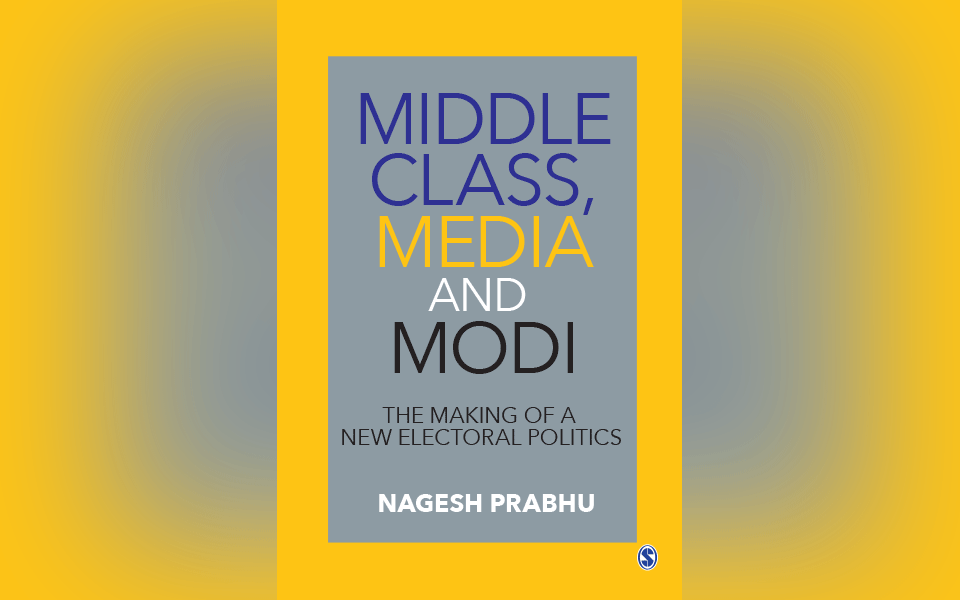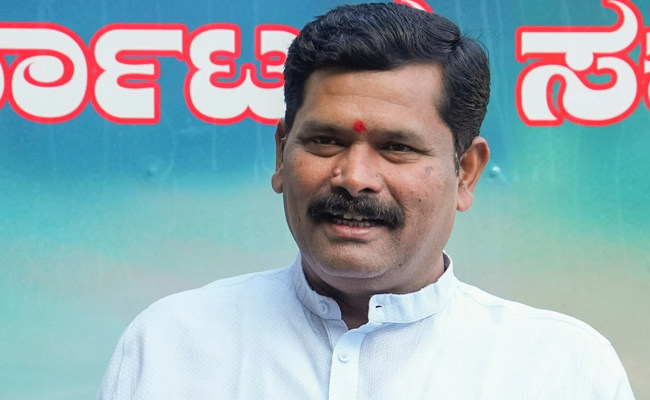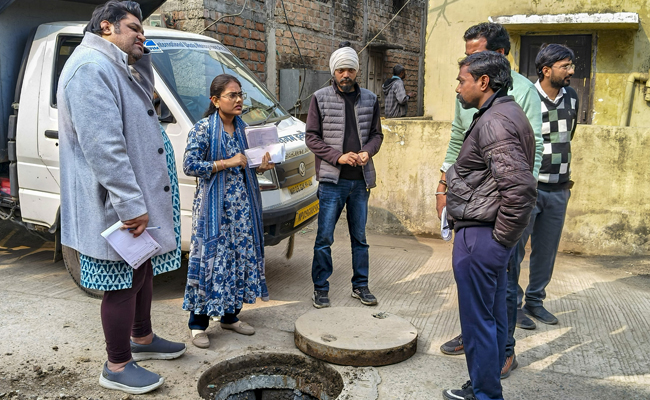The new research book “Middle Class, Media and Modi – The Making of A New Electoral Politics”, by Nagesh Prabhu, senior journalist, published by SAGE (2020), digs into the implications of the Indian middle class growth, and uncovers its role in electoral politics, media and the emergence of the Bharatiya Janata Party (BJP) since the 1980s.
The author examined the political developments from a clear-eyed and unbiased look at how the middle class transformed the political landscape in the post-liberalization India. Today’s middle class has always been at the centre of narrative around the country’s economic growth. It craved for its own economic well-being.
After debating the growth of the middle class under various Congress governments, the author discusses the role of the Indian middle class in shaping the economy and reasons for its support for the BJP in 2014 and 2019 parliamentary elections.
The book, which runs into over 400 pages, provided insights into the middle class politics and has thrown light on the use of traditional and new media by political parties, including the BJP and Prime Minister Modi.
Unlike other books in the field, this book has analyzed the politics from the class perspective and not from a traditional caste angle, though the caste plays a major role in politics. Dr Prabhu argues that education, income, occupation and class played a significant role in voting pattern in 2014 and 2019.
The author noted the growth of the Muslim and Dalit middle class and argues that the size of the middle class was different in different states owing to variations in growth/ development.
Using his journalist skills to seriously narrate the country’s political developments from the middle class perspective, the book highlighted the role of the middle class in nation building activities during the Nehru and Indira Gandhi regimes.
The author argues that the middle class, which used distanced itself from mainstream politics thinking that politics as a major cause of distraction for growth of their careers, are now negotiating the political frame and penalizing those who are seen as halting their growth and prosperity in the globalized economy.
Dr. Prabhu defended the arguments by providing answers to questions such as why have the Indian middle class, and upper caste who have always found comfort in social security and stability embraced Modi’s brand of Hindutva?
Noting the reform process, the author develops a theoretical approach to the nature of politics and class formation in the era of liberal economy. Besides tracing programmes launched by the Modi government during the last six years, the author discusses the impact of demonetization, GST, and Ayushman Bharat and many welfare schemes on the poor and the middle class.
The book has eight chapters. In the present context, the subject matter of the book is important and the ease with which it written make it a worthwhile read.
Book reviewer is Chartered Accountant in Bengaluru.
Let the Truth be known. If you read VB and like VB, please be a VB Supporter and Help us deliver the Truth to one and all.
Dhaka (PTI): A senior Bangladesh Cricket Board (BCB) official calling former captain Tamim Iqbal "an Indian agent" has not gone down well with the players in the country.
Tamim, one of the finest openers to have come out of Bangladesh, had advised the BCB to not be driven by emotion while deciding the way forward on the national team's participation in the T20 World Cup in India.
Nazmul, chairman of BCB finance committee, called the left-hander opener "an Indian agent" in a Facebook post.
"This time, the people of Bangladesh witnessed, with their own eyes, the emergence of yet another proven Indian agent," he wrote.
The post received immediate backlash from former and current cricketers, including Taskin Ahmed, Momimul Haque and Taijul Islam.
Even the Cricketers' Welfare Association of Bangladesh (CWAB) expressed shock at Nazmul's comments.
"A comment made by BCB director M Nazmul Islam regarding former national captain Tamim Iqbal has come to the attention of the Cricketers' Welfare Association of Bangladesh. We are stunned, shocked, and outraged by it.
"Such a remark by a board official about the most successful opener in Bangladesh's history, who represented the country for 16 years, is utterly condemnable.
"Not only because it concerns a player like Tamim, but such comments about any cricketer of the country are unacceptable and insulting to the entire cricketing community," the players' body said in a statement.
The 36-year-old Tamim played 70 Tests, 243 ODIs and 78 T20 Internationals for his country in a fairly accomplished career.
"We strongly protest against this comment. When a responsible board director makes such remarks on a public platform, it also raises serious questions about the code of conduct of board officials," it said.
"We have already submitted a protest letter to the BCB president, demanding a public apology from the concerned board director and that he be brought under accountability. We hope the BCB president will take appropriate action as soon as possible," CWAB added.
Bangladesh wrote to the International Cricket Council to move their T20 World Cup games out of India after the BCCI instructed IPL franchise KKR to release Mustafizur Rahman ahead of the 2026 edition without giving a specific reason.
"Cricket is the life of Bangladesh. A recent comment surrounding a former national captain who has made a major contribution to the game has caused many to reflect," said pacer Taskin.
"I believe that such remarks directed at a former cricketer of the country are not helpful in the interest of Bangladesh cricket. I hope the concerned authorities will consider the matter seriously and adopt a more responsible stance in the future," he said.
Mominul added: "The comment made by BCB director M Nazmul Islam regarding former national captain Tamim Iqbal is completely unacceptable and insulting to the country's cricketing community. Such behaviour towards a cricketer is in direct conflict with the board's responsibility and ethics," said Mominul.
"A senior cricketer was not given even the minimum respect; instead, he was deliberately humiliated in public. Such remarks show a lack of even basic decorum regarding where and how to speak while holding such a high responsibility.
"I strongly condemn this comment and firmly demand a public apology from the concerned director and that he be brought under accountability. I call upon the BCB to take swift and strict action," said Mominul.





